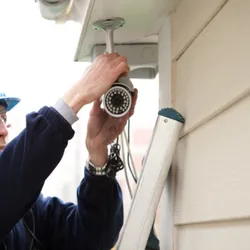
CCTV is normal in numerous regions all over the planet. As of late, the utilization of body-worn camcorders has been presented as another type of reconnaissance, frequently utilized in policing, cameras situated on a cop’s chest or head. Video reconnaissance has created a huge discussion about offsetting its utilization with people on the right track to protection in any event, when openly. In present-day plants, CCTV requirements may be used to see segments of a cycle from a central managing room. cctv installation derby structures could work continually or similarly true to form to screen a particular event. A further evolved kind of CCTV, using electronic video recorders (DVRs), gives recording to possibly various years, with a combination of significant worth and execution decisions and extra features, (for instance, development area and email alerts). All the more as of late, decentralized IP cameras, maybe outfitted with megapixel sensors, support recording straightforwardly to arrange joined capacity gadgets or inner glimmer for totally independent activity.
Innovation

The earliest video observation frameworks included consistent checking in light of the fact that it was basically impossible to record and store data. The advancement of reel-to-reel media empowered the recording of observation film. These frameworks expected attractive tapes to be changed physically, which was a tedious, costly and problematic cycle, with the administrator having to physically string the tape from the tape reel through the recorder onto a take-up reel. Because of these weaknesses, video reconnaissance was not boundless.
VCR innovation opened up during the 1970s, making it simpler to record and delete data, and the utilization of video reconnaissance turned out to be more normal. During the 1990s, advanced multiplexing was created, permitting a few cameras to record without a moment’s delay, as well as time slip by and movement just recording. This set aside time and cash which then prompted an expansion in the utilization of CCTV. As of late CCTV, innovation has been improved with a shift toward Internet-based items and frameworks, and other mechanical turns of events.
Application
- Shut circuit TV was utilized as a type of pay-per-view theater TV for sports like proficient boxing and expert wrestling, and from 1964 through 1970, the Indianapolis 500 car race. Boxing broadcasts were communicated in real-time to a select number of scenes, for the most part, theaters, where watchers paid for passes to watch the battle live. The principal battle with a shut circuit broadcast was Joe Louis versus Joe Walcott in 1948.
- Shut circuit broadcasts crested in ubiquity with Muhammad Ali during the 1960s and 1970s, with “The Rumble in the Jungle” battle drawing 50 million CCTV watchers overall in 1974, and the “Thrilla in Manila” drawing 100 million CCTV watchers overall in 1975. In 1985, the WrestleMania I proficient wrestling show was seen by more than 1,000,000 watchers with this plan.
- As late as 1996, the Julio César Chávez versus Oscar De La Hoya boxing battle had 750,000 watchers. Albeit shut circuit TV was continuously supplanted by pay-per-view home satellite TV during the 1980s and 1990s, today is still being used for most entertainment pageants and different occasions that are communicated live to most settings yet don’t air as such on network TV, and later re-altered for broadcast.
- The NYPD introduced it to stop wrongdoing nearby; in any case, crime percentages didn’t seem to drop much because of the cameras. By and by, during the 1980s video reconnaissance started to spread throughout the nation explicitly focusing on open regions. It was viewed as a less expensive method for stopping wrongdoing contrasted with expanding the size of the police divisions.
- A few organizations too, particularly those that were inclined to burglary, started to utilize video observation. From the mid-1990s on, police divisions in the nation over introduced a rising number of cameras in different public spaces including lodging ventures, schools and recreational area offices. CCTV later became normal in banks and stores to beat burglary down, by recording proof of a crime.

